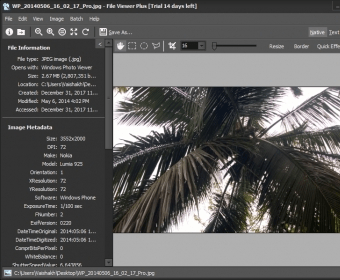

generated a catalog of circa seven million SNPs in date palms. Their results fit a model with two centers of earliest cultivation, including date palms autochthonous to North Africa. Their analysis provides the first genome-wide evidence for the date palm cultivars segregation into two main regions of shared genetic background from North Africa and the Arabian Gulf. conducted genotyping-by-sequencing and generated genome-wide genotyping data for 13,000–65,000 SNPs (single nucleotide polymorphisms) in a diverse set of date palm fruit and leaf samples mainly from P. Eastern accessions are substantially different from the Western ones, suggesting that they each have their own autochthonous origin. Zehdi-Azouzi and collaborators, analyzing nuclear SSRs, confirmed the existence of two pools named Eastern and Western within what is known as Phoenix dactylifera. The genetic structure of the date palm ( Phoenix dactylifera) in the Old World presents a strong differentiation between eastern and western populations. pusilla and it is likely due to differences in sampling strategies. The only major discrepancy between phenotypic heterogeneity values and genetic diversity is found in P.

theophrasti had low genetic diversity and some fixed private alleles, a pattern consistent with an evolution of small populations in isolation. Low phenotypic heterogeneity values ( Table 5) are associated with species originally restricted in their distribution area such as P. findings suggest a high genetic diversity within this species, which still needs to be explored. This merits further study considering that, notwithstanding the limited sampling of P. sylvestris ( Table 5) is very notable, especially considering the relatively low values of P. The high phenotypic heterogeneity of the hybrid P. The high phenotypic heterogeneity in various Phoenix species is related to the genetic diversity, age and ancestry of different taxa, hybridization events and introgressions prior to domestication, and selective pressures after domestication and, again, interspecific crosses after domestication. However, some of the variables analyzed here allow us to propose a set of their respective syndromes. For the western and eastern groups of Phoenix dactylifera, it is extremely difficult to find a set of well-defined differential characters. Phoenix dactylifera conforms to a complex of landraces and cultivars that coexist as phenotypically well-defined geographical groups with numerous intermediate forms and the long-distance translocation of otherwise local cultivars. At the lower limit of heterogeneity, we find species restricted in their distribution area: P. Phoenix dactylifera and related Mediterranean and Macaronesian taxa present the maximum heterogeneity.

Vegetative characters contribute less than the characters of the reproductive organs as a whole. Morphology, consistency and coloration of fruit and seed, followed by the inflorescences and female flowers, comprise the taxonomic characters that contribute the most to heterogeneity. The Shannon information entropy index allows the quantitative representation of the different levels of heterogeneity in the various taxonomic units of the genus Phoenix. Each accession or sample is described using 116 characters totaling 449 states. As Phoenix is a dioecious palm genus, female and male individuals are described separately. The description of the Phoenix morphological diversity in the present work is based on 596 accessions or populations belonging to 43 mutually exclusive taxonomic units (species, subspecies, varieties, landrace groups and hybrids). In the present work, we will use it to describe heterogeneity within the different taxonomic units in the genus Phoenix.

The concept of information entropy was introduced by Claude Shannon although initially intended to evaluate data communication systems, it has been used to measure biodiversity in terms of richness, evenness and dominance. Within Phoenix, date palm ( Phoenix dactylifera L.) is a major food crop of global relevance. The genus Phoenix offers examples of species with very different levels of diversity or heterogeneity. The quantitative study of genetic diversity requires tools to describe quantitatively and in parallel the whole phenotypic diversity in order to produce meaningful comparisons.


 0 kommentar(er)
0 kommentar(er)
